Art From the History of Medicine National Library of Medicine Nih
-
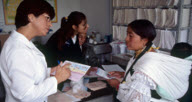
Against the Odds: Making a Difference in Global Health
A revolution in global health is taking place in villages and towns effectually the world. Communities, in collaboration with scientists, advocates, governments, and international organizations, are taking up the challenge to prevent disease and ameliorate quality of life. Against the Odds: Making a Difference in Global Health examines stories of the people who are working on a wide range of issues around the world—from community wellness to disharmonize and disease to bigotry.
VIEW Online Exhibition – Class Resources
-
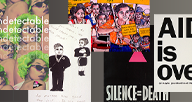
AIDS Posters and Stories of Public Wellness: A People'south History of a Pandemic
The collection of HIV/AIDS ephemera at the NLM is rooted in the cultural output of artists, activists, and community workers who use personal narrative, drawing as a visual art strategy, language, and the collective procedure to create posters that deliver vital health messages. AIDS Posters and Stories of Public Health: A People'southward History of a Pandemic looks at visual materials that have spurred communities into activity and continue to broadcast the message that AIDS is non over.
VIEW Online Exhibition – Resources | Traveling Exhibition
-
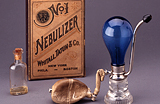
Breath of Life
Throughout history, people everywhere in every age have struggled with asthma. Today, asthma is a serious, widespread problem affecting millions of people in the Usa. Simply what is asthma? Who has asthma and why? Accept its prevalence and impact grown dramatically in our fourth dimension? Can it be managed, prevented, or cured? How practice people cope with asthma? To search for answers, Jiff of Life examines the medical and human being history of asthma.
VIEW Online Exhibition
-
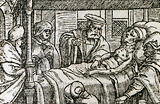
Emotions and Disease
For centuries, physicians and non-physicians alike take acknowledged that the style people feel in their minds tin influence the fashion they reply in their bodies. A recent field of inquiry is exploring the connections betwixt the neuroendocrine and immune systems—the influence of emotions on the onset, course, and remission of disease. Emotions and Disease highlights moments of this historical journey toward understanding how mental state impacts physical wellness, equally it leads into the promising future.
VIEW Online Exhibition
-
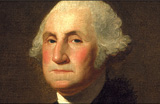
Every Necessary Intendance and Attending: George Washington & Medicine
George Washington had many dissimilar concerns and responsibilities, from running his plantation to ensuring the stability of a new nation. His status and wealth gave him—and his community—access to a growing class of medical experts and new knowledge about the spread and prevention of affliction. Fifty-fifty so, Washington encountered the limits of medicine when faced with serious illness. Every Necessary Care and Attention: George Washington and Medicine examines the ways in which Washington sought to ensure the health and rubber of his family, staff, enslaved workers, and troop.
VIEW Online Exhibition – Digital Gallery – Class Resource | Traveling Exhibition
-
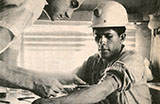
Fifty Years Ago: The Darkening Solar day
In 1970, the National Library of Medicine featured an exhibition about environmental pollution called The Darkening Day. As the modern environmental movement gained traction in the years prior, the public learned more about the harms of pollution, while scientists and government agencies worked to limit its effects. Fifty Years Agone: The Darkening Solar day highlights items from the NLM collections that represent authorities and scientific efforts to learn nigh and address environmental pollution's health impacts in the 1940s through the 1960s.
VIEW Online Exhibition
-
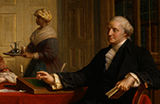
Fire and Freedom: Food and Enslavement in Early on America
Meals can tell us how power is exchanged between and among dissimilar peoples, races, genders, and classes. In the Chesapeake region during the colonial era, European settlers relied upon indentured servants, Native Americans, and African slave labor for life-saving noesis of farming and food acquisition, and to gain economic prosperity. Fire and Freedom: Nutrient and Enslavement in Early America peers into life at George Washington'south Mount Vernon plantation and the labor of enslaved workers to learn about the means that meals transcend sense of taste and sustenance.
VIEW Online Exhibition – Digital Gallery – Course Resources | Traveling Exhibition
-
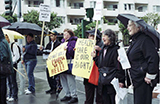
For All the People: A Century of Citizen Activity in Health Intendance Reform
Often, the public associates health care reform with presidents and national leaders, only communities, workers, activists, and wellness care professionals have fabricated their voices heard in the debate almost whether and how to make quality health care available to all. For All the People: A Century of Citizen Action in Health Care Reform tells the lesser-known story of how movements of ordinary citizens helped shape the changing American wellness care organization.
VIEW Online Exhibition – Digital Gallery – Grade Resources | Traveling Exhibition (English) | Traveling Exhibition (English and Castilian)
-
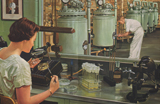
From Deoxyribonucleic acid To Beer: Harnessing Nature in Medicine and Industry
Over the by two centuries, scientists, in partnership with industry, have developed techniques using and modifying life forms similar yeast, molds, and bacteria, to create a host of new therapies and produce better foods and beverages. From DNA to Beer: Harnessing Nature in Medicine and Industry explores some of the processes, problems, and potential inherent in technologies that use microorganisms for health and commercial purposes.
VIEW Online Exhibition – Digital Gallery – Class Resource | Traveling Exhibition
-
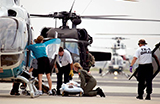
Making a World of Difference: Stories Almost Global Health
Communities, researchers, and medical professionals around the globe are mobilizing to preclude disease and improve quality of life. They work on projects that increase admission to primary wellness care, reduce bigotry, accost wellness information needs, foster medical discoveries through research, help end conflict, and provide vital care during natural disasters. Making a World of Difference: Stories Well-nigh Global Health examines people's efforts to amend health in their communities and effectually the world.
VIEW Online Exhibition – Digital Gallery – Class Resources | Traveling Exhibition
-
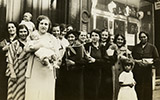
Outside/Inside: Immigration, Migration, and Health Care in the Us
Immigration and migration are important parts of the American story and health intendance and medicine have played a role in inclusion and exclusion, in "assimilation" and bigotry, in dividing communities and strengthening them. Outside/Inside: Immigration, Migration, and Wellness Care in the Us explores immigrant and migrant wellness since the late 1800s.
VIEW Online Exhibition – Digital Gallery – Class Resources | Traveling Exhibition
-
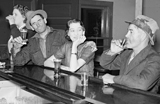
Selection Your Toxicant: Intoxicating Pleasures & Medical Prescriptions
Throughout the history of America, people have used heed altering drugs. While some of those drugs are socially adequate, others are outlawed because of their toxic, and intoxicating, characteristics. These classifications have shifted at unlike times in history, and will proceed to change. Pick Your Poison: Intoxicating Pleasures and Medical Prescriptions explores the factors that have shaped the changing definitions of some of our nigh potent drugs, from medical phenomenon to social menace.
VIEW Online Exhibition – Digital Gallery – Class Resources | Traveling Exhibition
-
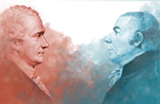
Politics of Yellow Fever in Alexander Hamilton's America
In 1973, yellow fever ravaged Philadelphia. Citizens confronted the epidemic in the absenteeism of an constructive cure or consensus about the origins of the affliction. Medical professionals, early political parties, and private citizens seized on the epidemic to accelerate their respective agendas. Equally a result, Philadelphia'due south sick and dying received medical intendance informed as much by politics every bit by the best bachelor science. Politics of Xanthous Fever in Alexander Hamilton'southward America considers how science and politics helped decide the response to the 1793 yellow fever epidemic in Philadelphia.
VIEW Online Exhibition – Digital Gallery – Class Resources | Traveling Exhibition
-
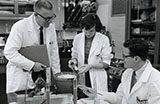
Rashes to Research: Scientists and Parents Confront the 1964 Rubella Epidemic
As the rubella epidemic raged in 1964, 20,000 children were born with serious heart, hearing, and vision problems related to rubella exposure during pregnancy. While the nation's scientists rushed to create a vaccine and develop meliorate screening tests, families faced hard decisions about electric current and future pregnancies. Rashes to Research: Scientists and Parents Face up the 1964 Rubella Epidemic highlights the work of researchers and parents to respond to rubella in the years before an effective vaccine nearly eliminated the disease from the The states.
VIEW Online Exhibition – Digital Gallery – Grade Resources | Traveling Exhibition
-
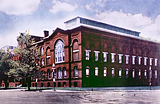
Then, What's New in the Past? The Multiple Meanings of Medical History
The history of medicine tells dissimilar stories and unlike truths depending on the questions asked and the concerns raised. That's why at that place is e'er something new in the past. History provides dissimilar meanings and different content to find answers to ever-changing questions. Then, What'south New in the Past? The Multiple Meanings of Medical History explores some of the many meanings people have found in the history of medicine within the United States.
VIEW Online Exhibition
-
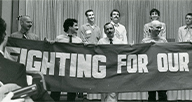
Surviving and Thriving: AIDS, Politics, and Culture/Sobrevivir y Prosperar: Sida, Política y Cultura
In 1981, a new disease appeared in the United states. Reactions to the affliction, before long named AIDS (acquired immune deficiency syndrome), varied. Early on responders cared for the sick, fought homophobia, and promoted new practices to keep people healthy. Scientists and public health officials struggled to empathize the disease and how it spread. Politicians remained largely silent until the epidemic became too big to ignore. Activists demanded that people with AIDS exist office of the solution.Surviving and Thriving: AIDS, Politics, and Culture/Sobrevivir y Prosperar: Sida, Política y Cultura, a bilingual exhibition in English and Spanish, illustrates an iconic history of AIDS alongside lesser-known examples of historical figures who changed the course of the pandemic.
VIEW Online Exhibition – Digital Gallery – Class Resource | Traveling Exhibition (English) | Traveling Exhibition (English and Spanish)
-
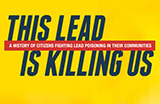
This Lead Is Killing Us: A History of Citizens Fighting Atomic number 82 Poisoning in Their Communities
Atomic number 82 exposure tin cause neurological problems and sometimes even death; notwithstanding this metal has been pervasive in many aspects of American life for over a century. Many industries have included lead in their production processes and in products like household paints and gasoline, endangering wellness. This Atomic number 82 Is Killing Us: A History of Citizens Fighting Lead Poisoning in Their Communities tells an important story of advocates protecting their communities from the dangers of pb and making their voices heard with industry, housing authorities, and elected officials.
VIEW Online Exhibition – Digital Gallery – Class Resources | Traveling Exhibition
-
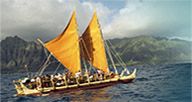
A Voyage to Wellness
Around the twelvemonth 400, migrating voyagers from the South Pacific began to settle on the island of Kaho'olawe. For centuries, the island served as a navigational hub for the region and sacred site until European colonizers invaded. Following WWII, the United states military seized the isle for bombing exercises. A Voyage to Health explores the history of Kaho'olawe, traditional voyaging, and how the resurgence of Native Hawaiian culture has helped heal the community.
VIEW Online Exhibition – Class Resources
Close Close All Open All
Source: https://www.nlm.nih.gov/hmd/about/exhibition/index.html
0 Response to "Art From the History of Medicine National Library of Medicine Nih"
Post a Comment